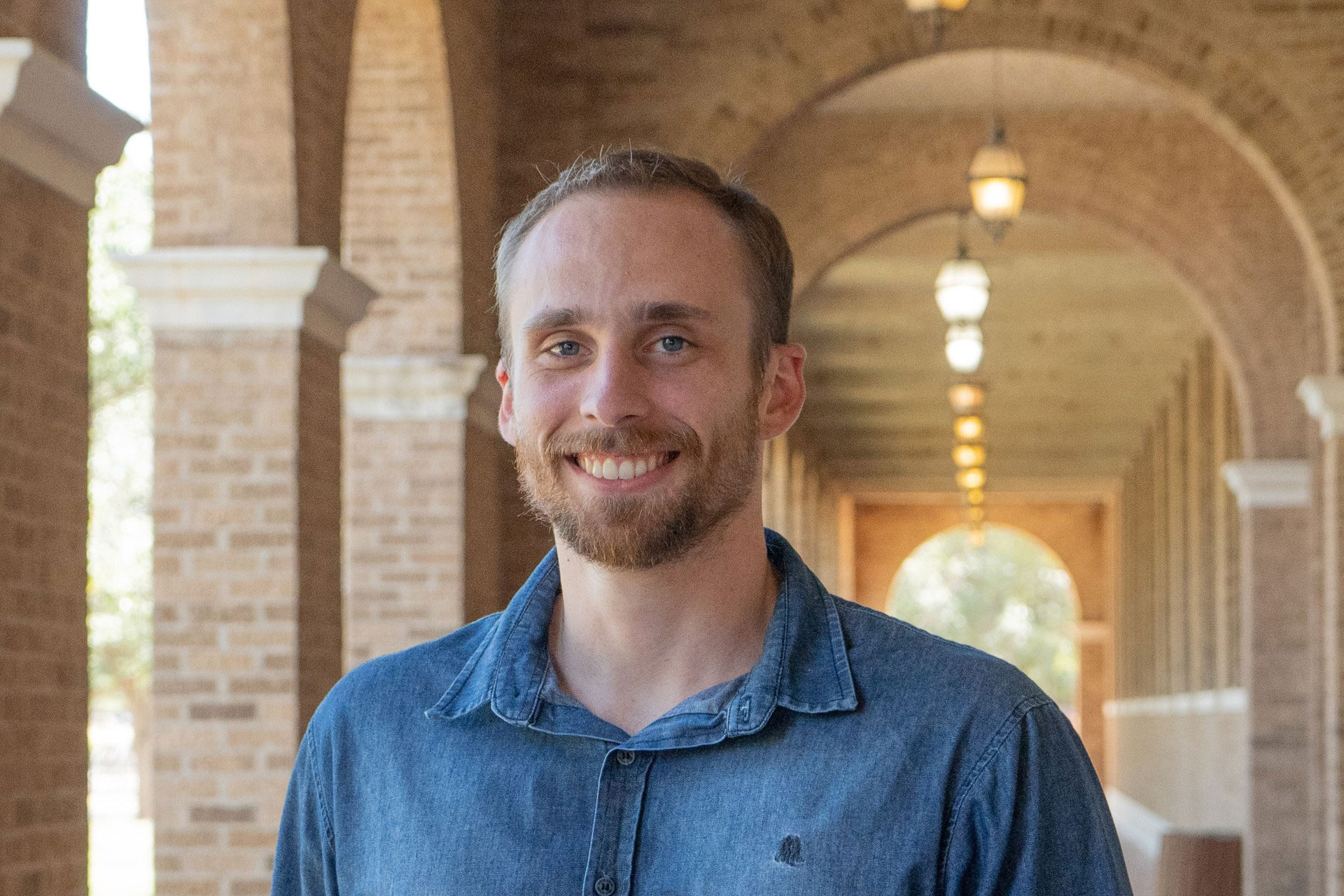With a background in mechatronics, Gustavo Paulon is a third-year Ph.D. student in industrial and systems engineering (ISE) working to design smarter, safer helmets for first responders.
His research focuses on the biomechanics of traumatic brain injuries (TBI), specifically head-neck dynamics. He’s developing computational models to improve helmet designs for firefighters, police officers and other first responders – all groups at higher risk of concussions. Since poorly balanced helmets can contribute to neck strain and musculoskeletal injuries, his work in collaboration with the Department of Homeland Security centers on optimizing helmet fit and ergonomics.
He’s also working on a National Science Foundation-funded project that involves neuronal connectivity modeling with data collected from actual TBI patients. The research uses a brain muscle interface framework and simulates brain activity from EEG, f-NIRS, and diffusion MRI data. The research establishes first-of-its-kind connections between brain neuronal connectivity and muscles to retrieve both neurological information and muscular response.
Paulon’s advisor, University of Florida Associate ISE Professor Suman K. Chowdhury, Ph.D., and a recipient of the NSF early career award (CAREER) emphasized Paulon’s expertise in mechatronics is critical to the development of brain-muscle interface modeling.
“Our main goal is to give a platform of the brain muscle interface where we can predict for a given brain injury how it is going to affect the muscle and joint impairments,” said Chowdhury.
Both projects aim to reduce and prevent traumatic brain injury of first responders, military personnel and civilian populations.
Originally from Sao Jose do Rio Preto, Brazil, Paulon followed a non-traditional path in academia. After obtaining his bachelor’s degree, he spent four years working as a computer-aided engineering analyst focusing on durability of agricultural machines and powertrains for trucks. Longing for more impactful work, he decided to deepen his knowledge and create meaningful impact through research.
“During my undergraduate studies I discovered a strong interest in simulations,” said Paulon. “I realized these tools could be applied to improve our understanding of traumatic brain injuries and head-neck biomechanics injury, which would combine my technical skills with research that has real-world impact.”
Chowdhury also praised Paulon’s interpersonal skills.
“He listens to all sides of a conversation before arriving at a decision,” he said. “All undergrads working on my team listen to and respect him.”
Here are more highlights from one of ISE’s leading Ph.D. students:
How do you see your work contributing to real-world injury prevention?
By studying how helmets influence neck biomechanics, my work aims to inform more ergonomic helmet design. Additionally, by modeling brain tissue-level injury mechanisms, I hope to better understand the potential long-term effects of TBI on individuals.
What has your experience working on brain-neuron modeling and helmet design, and why does this work matter to you?
It is a challenging and unique experience. The field of brain-neuron modeling has been growing fast and requires multidisciplinary knowledge; however, I believe that it is a field that can provide interesting insights about how injury occurs in the brain and their broader effects on human body mechanics.
Are there any collaborations, papers, projects, or accolades that you’re especially proud of?
I am particularly proud of three papers/collaborations so far: the first is my first paper that explores the effects of firefighter helmets on head-neck kinematics using OpenSim modeling platform, which was published in the Journal of Biomechanics; the second is a paper about the validation of a head-neck finite element (still under review), this was a very interesting work and we put a lot of effort to make it happen; lastly, a colleague and I just published a paper in the Ergonomics journal that explores the effects of firefighter helmets on the progression of neck muscle fatigue mechanism.
Outside of research, what are some interests, hobbies, or experiences that you enjoy?
I enjoy being outdoors and activities like hiking, paddling and swimming help me prioritize physical fitness. Recently, I also developed a strong interest in reading.

